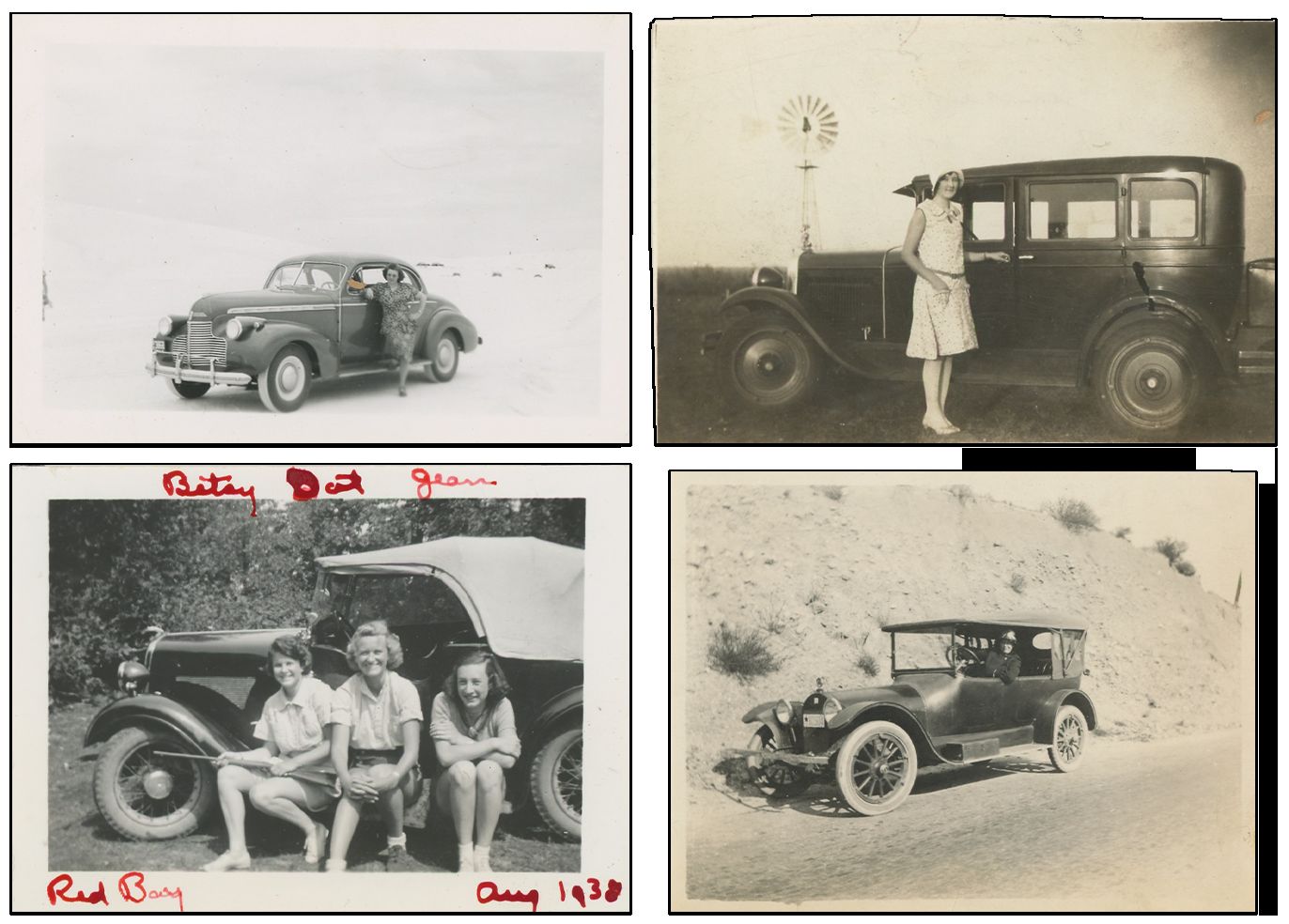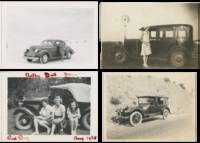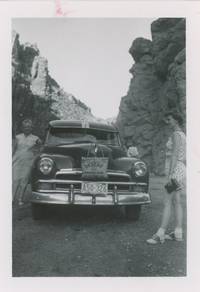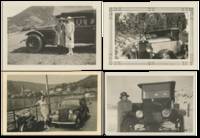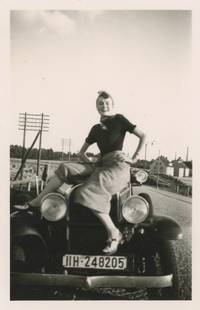Collection of Photographs of Women and Their Cars, 1910s–1950s
- Eighty-seven photographs, mainly 2 ½ x 3 ½ inches and smaller. Many with manuscript captions and some with studio stamps
- United States and Europe , 1950
United States and Europe, 1950. Eighty-seven photographs, mainly 2 ½ x 3 ½ inches and smaller. Many with manuscript captions and some with studio stamps. Overall excellent to Near Fine.. A collection of photographs of women and their cars, dating between the 1910s and early 1950s, with most photos dating to the 1920s and 1930s. Some photos identify the location and occasionally the names of the women; they appear to be mainly unrelated. The photos’ collector has identified approximate years and models of many of the cars, which range from Model Ts and Model As to a 1930s Gräf & Stift, a mid-1920s Willys-Overland Whippet, a 1928 Hupmobile, and more. The photos include shots at home, on vacations—two women pose in a canyon in the Superstition Mountains with a “desert water bag” hanging off the hood of their Plymouth—or seemingly at college, as two girls stand in front of a car labeled “ΛXA LuluBelle” and “Death-Dodger”.
Women driving was controversial, and they faced opposition and derision from the start; it was seen as uncouth and inappropriate to women’s delicate physical and mental constitution.[1] In the late 1950s, as the Interstate Highway System was under construction, suggestions were made that marking and signage should coming in soothing pastel colors and that highways should have a truck-free slow lane for panicking women drivers.[2]
Of interest to historians of gender and the automobile, and auto recreation.
[1] Virginia Scharff, Taking the Wheel: Women and the Coming of the Motor Age (University of New Mexico Press, 1992).
[2] A. Carl Stelling, “Designing for the Ladies,” Landscape Architecture Magazine 49, no. 2 (Winter 1958–1959), 84–86.
Women driving was controversial, and they faced opposition and derision from the start; it was seen as uncouth and inappropriate to women’s delicate physical and mental constitution.[1] In the late 1950s, as the Interstate Highway System was under construction, suggestions were made that marking and signage should coming in soothing pastel colors and that highways should have a truck-free slow lane for panicking women drivers.[2]
Of interest to historians of gender and the automobile, and auto recreation.
[1] Virginia Scharff, Taking the Wheel: Women and the Coming of the Motor Age (University of New Mexico Press, 1992).
[2] A. Carl Stelling, “Designing for the Ladies,” Landscape Architecture Magazine 49, no. 2 (Winter 1958–1959), 84–86.


